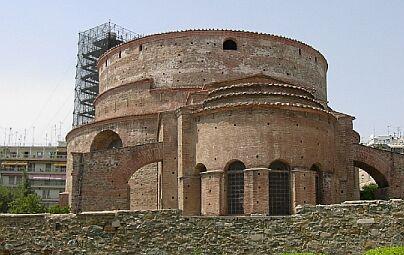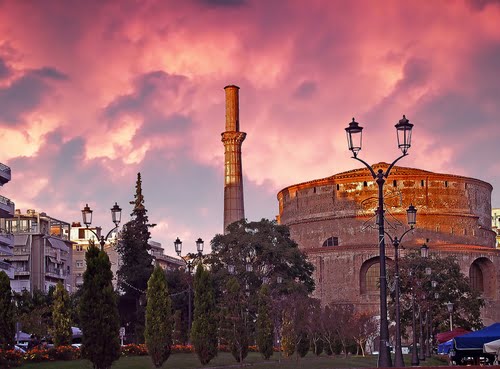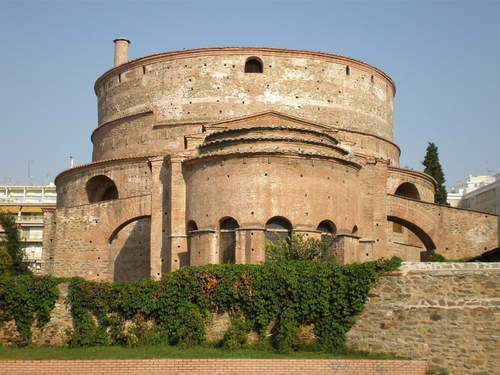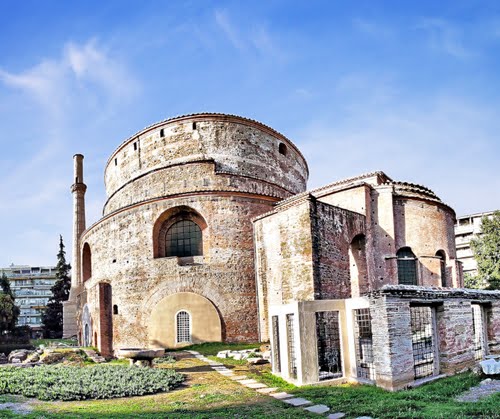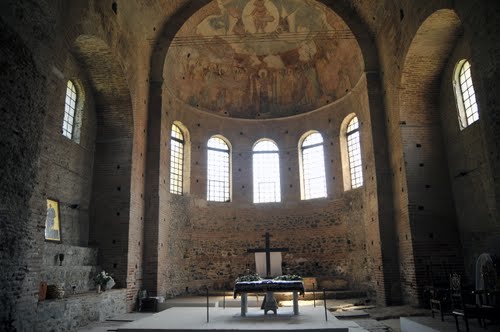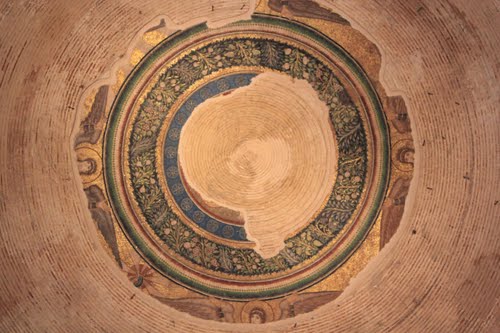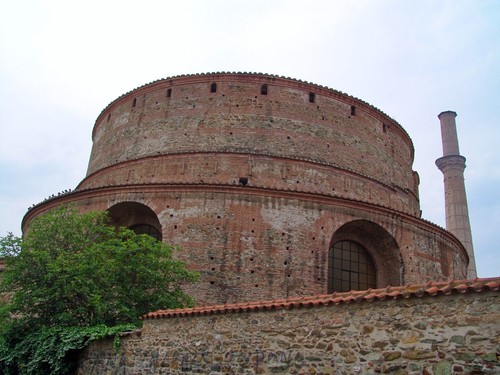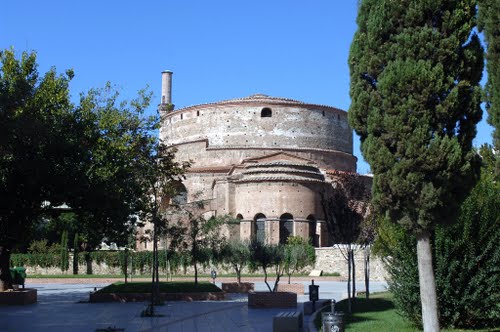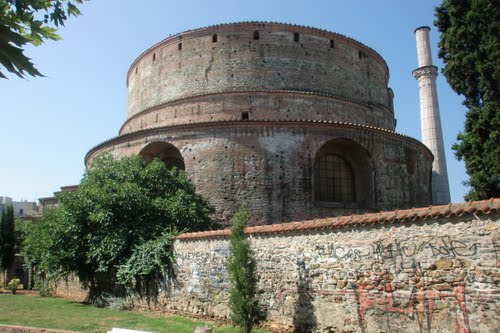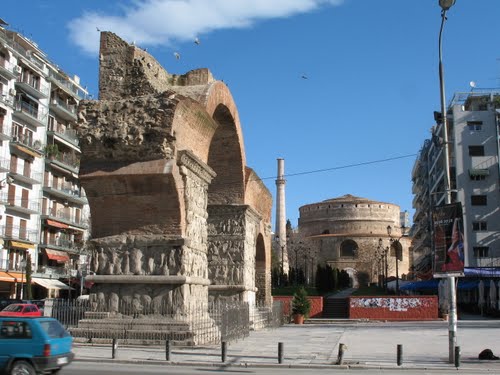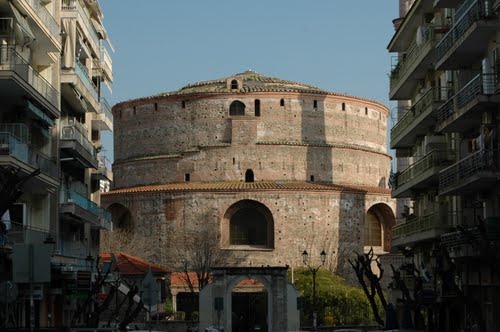The Rotunda of Galerius is 125m northeast of the Arch of Galerius. It is also known (by its consecration and use) as the Greek Orthodox Church of Agios Georgios, and is informally called the Church of the Rotunda (or simply The Rotunda). The cylindrical structure was built in 306 AD on the orders of the tetrarch Galerius, who was thought to have intended it to be his mausoleum. It was more likely intended as a temple; it is not known to what god it would have been dedicated.
The Rotunda has a diameter of 24.5 m. Its walls are more than 6 m thick, which is why it has withstood Thessaloniki's earthquakes. The walls are interrupted by eight rectangular bays, with the south bay forming the entrance. A flat brick dome, 30 m high at the peak, crowns the cylindrical structure. In its original design, the dome of the Rotunda had an oculus, as does the Pantheon in Rome.
After Galerius's death in 311, he was buried at Gamzigrad (Felix Romuliana) near Zajecar, Serbia. The Rotunda stood empty for several years until the Emperor Constantine I ordered it converted into a Christian church in 326. The church was embellished with very high quality mosaics. Only fragments have survived of the original decoration, for example, a band depicting saints with hands raised in prayer, in front of complex architectural fantasies.
The building was used as a church for over 1,200 years until the city fell to the Ottomans. In 1590 it was converted into a mosque, called the Mosque of Suleyman Hortaji Effendi, and a minaret was added to the structure. It was used as a mosque until 1912, when the Greeks captured the city during the Balkan War. Greek Orthodox officials reconsecrated the structure as a church, and they left the minaret. The structure was damaged during an earthquake in 1978 but was subsequently restored. As of 2004, the minaret was still being stabilized with scaffolding. The building is now a historical monument under the Ephorate of Byzantine Antiquities of the Greek Ministry of Culture, although the Greek Orthodox Church has access to the church for various festivities.
The Rotunda is the oldest of Thessaloniki's churches. Some Greek publications claim it is the oldest Christian church in the world, although there are competitors for that title. It is the most important surviving example of a church from the early Christian period of the Greek-speaking part of the Roman Empire.


